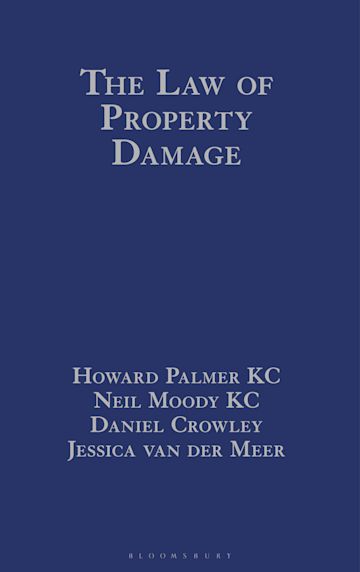Bloomsbury Professional Home
The Law of Property Damage
Q & A with Jessica Van Der Meer
Jessica van der Meer is the co-author of The Law of Property Damage.
This is included in our Property and Land Law Online Service.
What first drew you to Property Damage Law?
Property Damage Law, as such, doesn’t really exist. Our hot-off-the-press practitioner’s text (The Law of Property Damage) is really the first proper acknowledgment that it should be regarded as a stand-alone area of law.
What has always been attractive to me about property damage as a practice area is that it brings together many different, interesting and at times conflicting areas of law. The big-ticket examples are contract and tort law pushing up against real property law and sometimes human rights law. Even taking just the two principal areas of law (tort and contract) that dominate property damage law: they both have different ways of looking at the basic principles we lawyers apply, like legal duties, allocation of risk and tests of remoteness of loss and damage.
Overlaying those fun legal (principle) challenges is also the practical, technical aspects of cases: getting into the nitty gritty of a multi-million-pound construction project or trying to understand how exactly a fire started. There is also the macro picture that you have to hold on to as a lawyer: this is an area of law that affects our daily lives. I’m thinking here about when a contractor accidentally digs through or cuts through electrical cables or water mains, cutting off electricity and water to sometimes hundreds of homeowners, or when buildings or walls or cranes fail, when we are disappointed by an architect, contractor or surveyor or when that neighbour drives a digger through your home (a real case I’m dealing with at the moment).
It’s an area of law that has got something for everyone.
What do you think is a common misconception about Property Damage Law?
That it’s not worthy of attention as a sui generis area of law. Many people have this idea that property damage law isn’t special, you just take concepts of contract law and tort and superimpose them on your particular facts, whether it is a fire at a thatched cottage or the collapse of a massive building during construction. This is misleading and also too reductionist. Property Damage Law has taken those broader legal concepts all lawyers know and moulded them into specialised legal principles: for instance, it has taken the ordinary legal duty of care from common law tort and modified it to become a measured duty of care that applies to occupiers of land.
Our practitioner’s text is effectively a book-sized argument for treating Property Damage as its own area of law.
What developments do you foresee happening in this area of the law over the next few years?
We’ve already witnessed a pretty big shift in recent months on what is regarded as private nuisance (the legal definition of ‘nuisance’ here, that is, the wrongful interference with the use and enjoyment of another’s land). I’m thinking here of the Tate Modern case where earlier this year the UK Supreme Court held, contrary to what some of us practitioners had anticipated, that a visual intrusion, specifically overlooking into your flat, can be a private nuisance.
You might recall that the case was a longstanding dispute between the Tate Modern’s latest addition, the Blavatnik Building, and the (rich) people living opposite in Neo Bankside, a series of glass boxes designed by Richard Rogers, the genius behind the Centre Pompidou in Paris and the Lloyds of London Building. In all the lower court decisions, including a stacked Court of Appeal panel, the Tate had won; the courts were really reluctant to extend an interference to overlooking into a flat. The UK Supreme Court’s judgment, a long and complicated read, has reshaped the law in this area.
I would now point to this area – private nuisance – as being the space to watch for the coming few years. Also because of climate change: home insurers are seeing a 200% increase in tree roots subsidence insurance claims made by their insureds. These are also private nuisance claims, usually against other neighbouring homeowners (i.e., their home insurers) or local authorities whose trees are causing the private nuisance (tree roots encroaching under foundations, causing damage to the foundations and homes usually in the form of major cracking). As we are having increasingly hot springs and summers, these claims will continue to accumulate, so there will be lots of cases coming down the pipeline with opportunities for higher courts to continue reformulating what constitutes a private nuisance.
If you could pick any career other than law, what would you do for work?
I’d be a potter.

